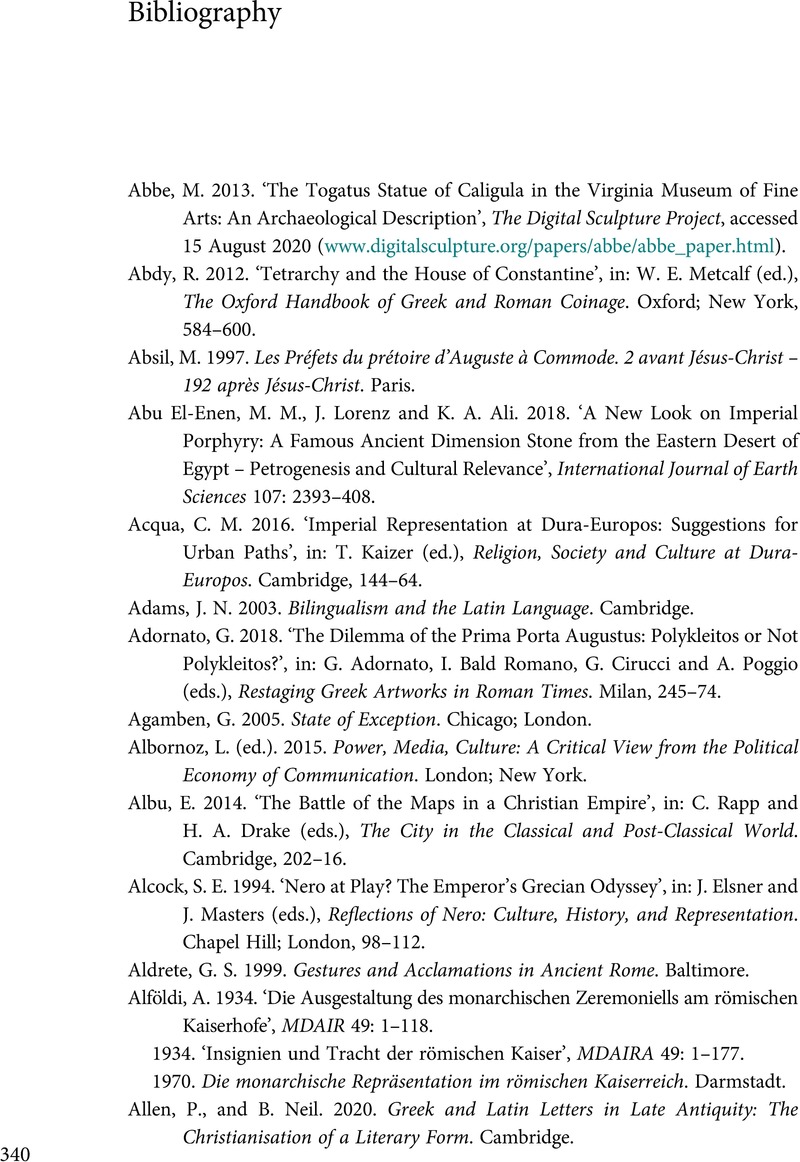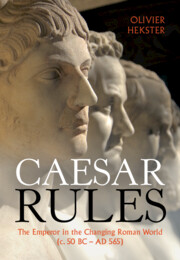Book contents
- Caesar Rules
- Caesar Rules
- Copyright page
- Dedication
- Epigraph
- Contents
- Figures
- Maps
- Graphs
- Preface
- Timeline
- Abbreviations
- Introduction
- 1 Portraying the Roman Emperor
- 2 Playing Imperial Roles
- 3 Being around the Emperor
- 4 The Emperor in the Capital and Provinces
- Conclusions
- Appendix
- Glossary
- Bibliography
- Index of Persons and Places
- General Index
- References
Bibliography
Published online by Cambridge University Press: 23 November 2022
- Caesar Rules
- Caesar Rules
- Copyright page
- Dedication
- Epigraph
- Contents
- Figures
- Maps
- Graphs
- Preface
- Timeline
- Abbreviations
- Introduction
- 1 Portraying the Roman Emperor
- 2 Playing Imperial Roles
- 3 Being around the Emperor
- 4 The Emperor in the Capital and Provinces
- Conclusions
- Appendix
- Glossary
- Bibliography
- Index of Persons and Places
- General Index
- References
Summary

- Type
- Chapter
- Information
- Caesar RulesThe Emperor in the Changing Roman World (c. 50 BC – AD 565), pp. 340 - 392Publisher: Cambridge University PressPrint publication year: 2022

